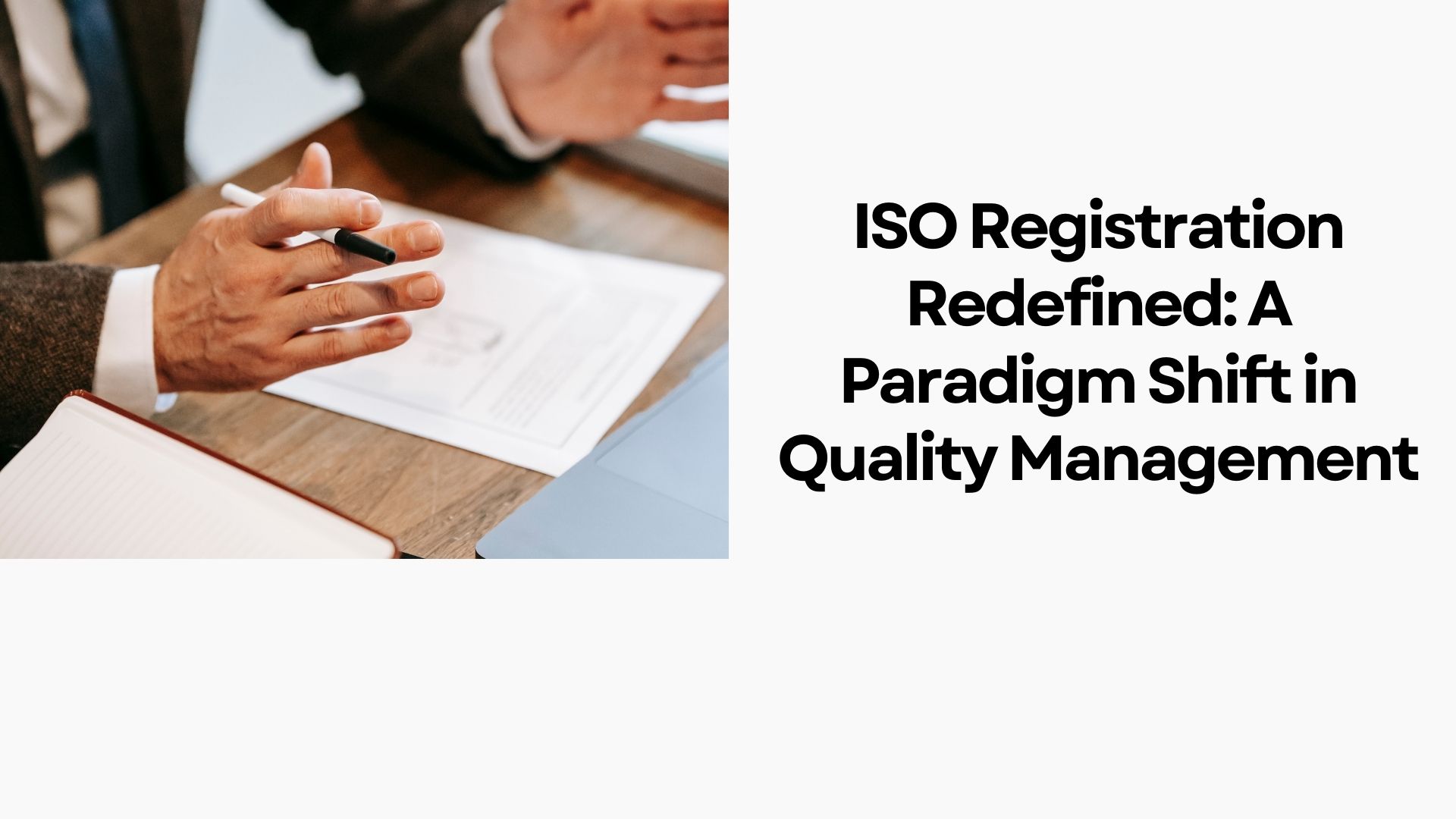
ISO Registration Redefined: A Paradigm Shift in Quality Management
Introduction
In the world of business and industry, the pursuit of excellence and quality has been an enduring quest. Organizations, regardless of their size or sector, have long recognized the significance of adhering to international standards to ensure consistent quality, improve processes, and boost customer satisfaction. One of the most renowned and respected systems for achieving this is the ISO (International Organization for Standardization) certification.
For decades, ISO registration has been a hallmark of credibility and quality assurance, serving as a benchmark for organizations globally. However, the landscape of quality management and certification is evolving, and ISO registration is being redefined to meet the demands of a rapidly changing world.
This article delves into the fundamental transformation taking place within the ISO framework, exploring the motivations, challenges, and potential benefits that this redefined ISO registration offers to organizations worldwide.
The Traditional ISO Certification
ISO certification, in its traditional form, was primarily associated with a checklist-based approach. Organizations aiming to attain ISO certification would be assessed against a set of predefined standards specific to their industry or process. These standards were designed to ensure that a business’s operations were structured, controlled, and capable of consistently delivering high-quality products or services.
While the traditional ISO certification system has brought about many positive changes in organizations, it had some limitations. These limitations included a focus on paperwork, a rigid approach to audits, and an absence of flexibility to address the unique challenges faced by different organizations.
The Paradigm Shift: Risk-Based Thinking
Recognizing the need for a more adaptive and dynamic approach to quality management, ISO introduced the concept of “risk-based thinking” in its 2015 version of standards, such as ISO 9001 (Quality Management Systems) and ISO 14001 (Environmental Management Systems). Risk-based thinking encourages organizations to anticipate, manage, and adapt to the challenges and uncertainties that may affect their ability to meet quality and environmental objectives.
This shift from a prescriptive to a more flexible, risk-based approach is the cornerstone of ISO registration redefined. It empowers organizations to tailor their quality management systems to their specific needs, while simultaneously promoting innovation and continuous improvement.
Key Components of ISO Registration Redefined
Customization:
The redefined ISO registration allows organizations to develop quality management systems that are truly customized to their unique contexts. This means that a company’s processes and procedures are designed to address its specific risks, challenges, and opportunities.
Process Integration:
ISO registration redefined emphasizes the integration of quality management principles across the entire organization. This integration is not limited to a standalone department but should be ingrained within the company’s culture and DNA.
Leadership Engagement:
Top management’s active involvement and commitment to the quality management system are crucial. They are responsible for setting the strategic direction and ensuring that the system aligns with the organization’s overall goals.
Continual Improvement:
The redefined ISO registration promotes a culture of ongoing improvement. Organizations are encouraged to learn from their experiences, both successes and failures, and use this knowledge to drive positive change.
Flexibility:
The risk-based thinking approach encourages organizations to be more adaptable in their approach to quality management. This flexibility allows them to respond effectively to changes in their business environment and to customer needs.
Benefits and Challenges
ISO registration redefined offers several benefits to organizations:
Enhanced Adaptability:
Organizations can more effectively respond to changing market conditions and customer demands.
Improved Risk Management:
The focus on risk-based thinking enables better identification and mitigation of potential threats.
Increased Customer Satisfaction:
A customized approach to quality management often results in better customer experiences and higher satisfaction levels.
Competitive Advantage:
Organizations that embrace the redefined ISO registration can use it as a differentiator in the marketplace.
However, there are also challenges:
Initial Transition:
Adapting to the new ISO framework may require initial changes to existing processes and mindsets.
Training and Awareness:
Staff at all levels need to be educated and trained in the principles of the redefined ISO framework.
Ongoing Maintenance:
Achieving ISO registration is one thing; maintaining it through continual improvement is another ongoing challenge.
Note: you Can Apply for ISO 9001 Certification
Conclusion
ISO registration has long been synonymous with quality, credibility, and reliability. With ISO registration redefined, the paradigm of quality management has shifted from a rigid, checkbox approach to a more dynamic, adaptable, and risk-aware system. Organizations that embrace this evolution are better equipped to meet the demands of a constantly changing business environment, foster innovation, and, ultimately, provide enhanced value to their customers.
As the business world continues to evolve, ISO registration, too, is redefining itself to ensure that it remains relevant and instrumental in helping organizations excel in the pursuit of quality and excellence. Embracing this transformation can lead to a future where ISO-certified organizations are not just known for their standards but for their ability to navigate the complexities of the modern business landscape.


